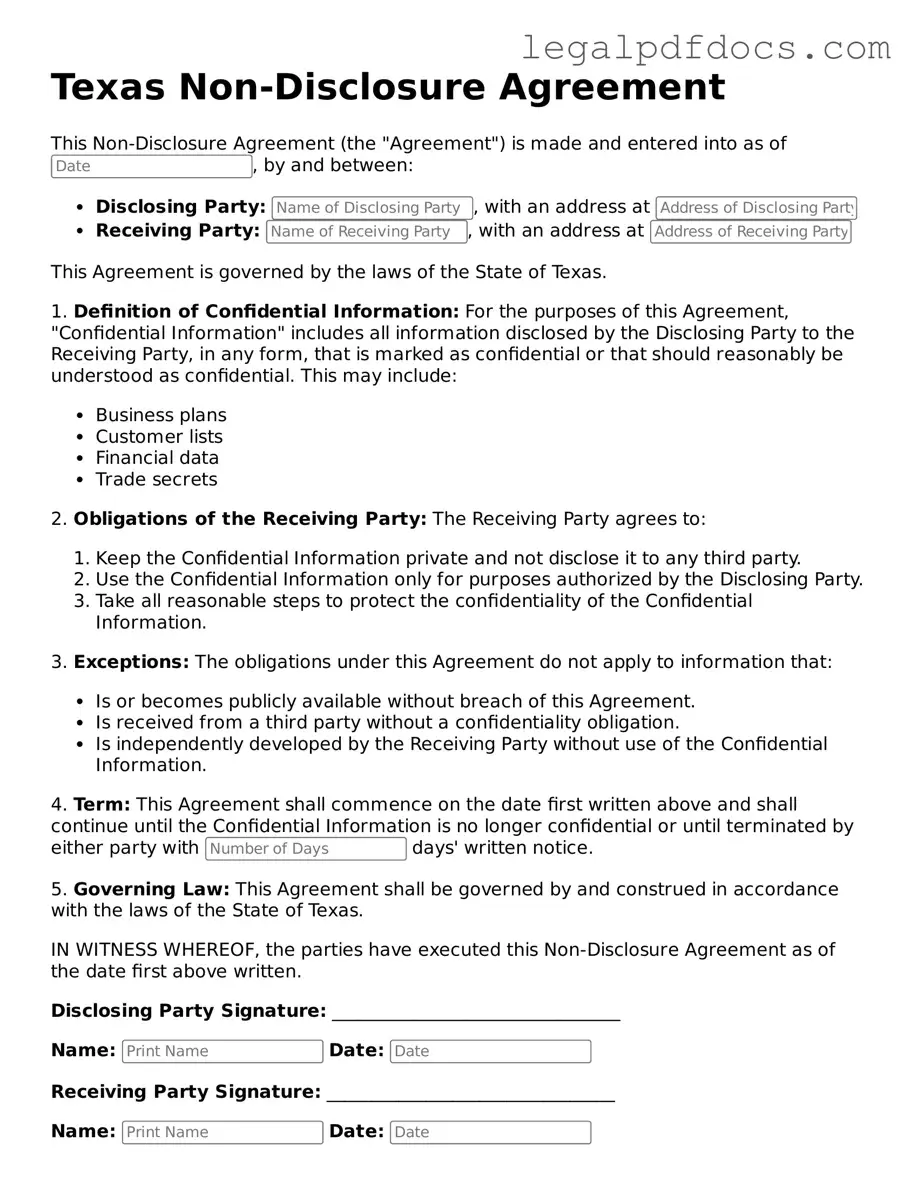Official Non-disclosure Agreement Form for Texas
A Texas Non-disclosure Agreement (NDA) is a legal document designed to protect sensitive information shared between parties. This form ensures that confidential details remain private and are not disclosed to unauthorized individuals. For those looking to safeguard their business interests, filling out this agreement is an essential step.
Take action today to protect your information. Fill out the Texas Non-disclosure Agreement form by clicking the button below.
Open Non-disclosure Agreement Editor Here
